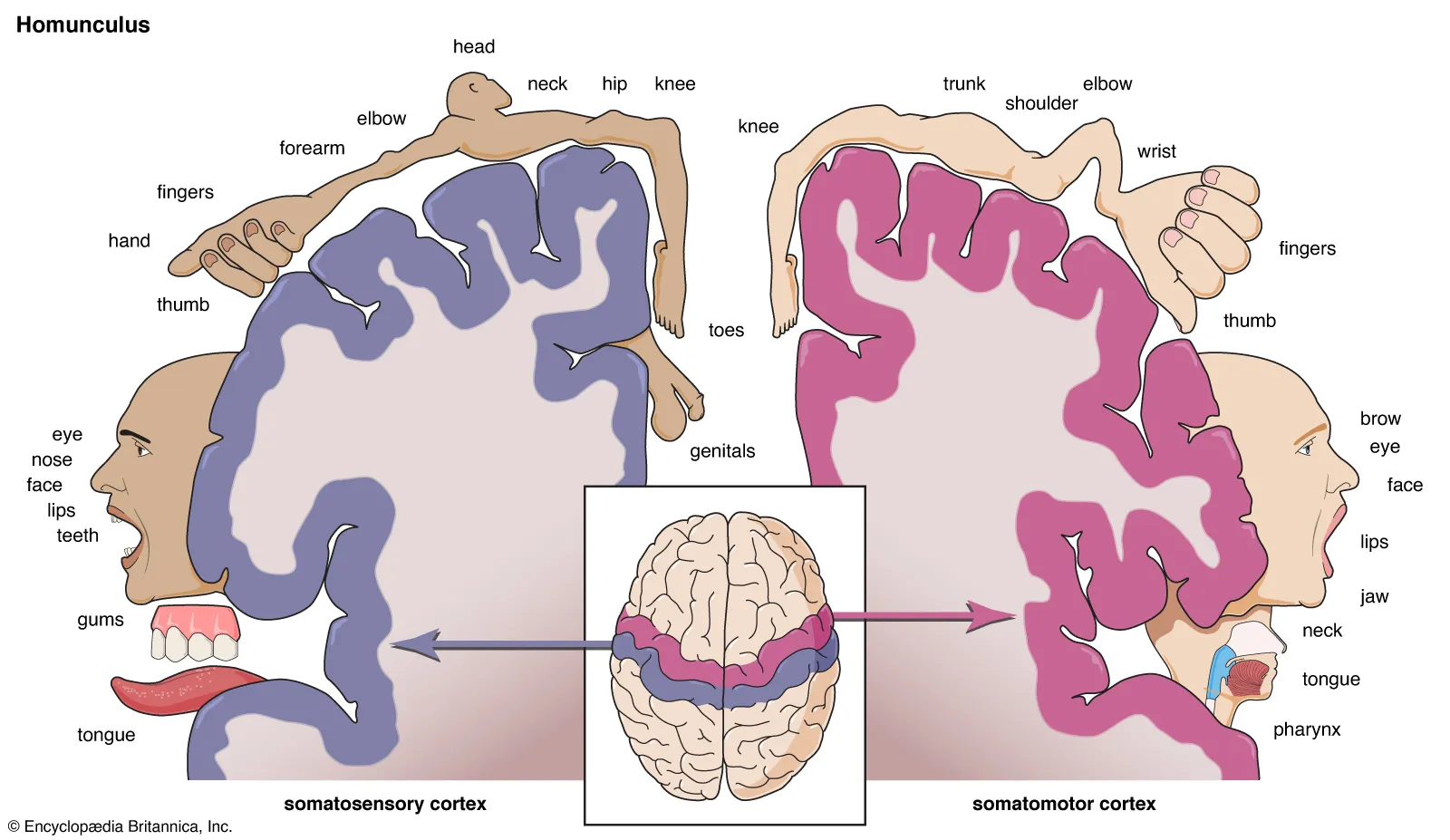Motor Cortex and Pathways
1/9
There's no tags or description
Looks like no tags are added yet.
Name | Mastery | Learn | Test | Matching | Spaced |
|---|
No study sessions yet.
10 Terms
Motor homunculus
Area of cortex is proportional to the degree of motor innervation on contralateral side of body
Lower limb more medial and head more lateral
More neurones mean more precise movement

Separation between motor and sensory cortex
Central sulcus
Primary motor cortex is in pre-central gyrus, sensory is in post-central gyrus
Main descending motor pathways
Corticospinal, corticobulbar, reticulospinal, vestibulospinal
Corticospinal pathway
Voluntary control of movement
Vestibulospinal pathway
Posture, balance, muscle tone reflexes
Reticulospinal pathway
Facilitates and inhibits voluntary muscle contraction - regulates muscle tone (readiness for contraction)
Corticospinal tract
Starts in precentral gyrus, moves down ipsilaterally through midbrain and pons, crosses to contralateral side in medulla, into the spinal cord where it synapses with an alpha motor neurone (lower motor neurone) and then information travels to limb where extrafusal muscles are innervated to produce voluntary movement
Reticulospinal tract
Begins in reticular formation in the brainstem which sits in between the pons and medulla, travels down into spinal cord on ipsilateral side and synapses in spinal cord to innervate gamma motor neurones in muscle spindles to regulate muscle tone
Vestibulospinal tract
Begins in vestibular nucleus in the medulla and pons of the midbrain and travels down the ipsilateral side of the spinal cord where it synapses and goes on to innervate axial extensors (muscles of the trunk) to maintain posture
Corticospinal pathway influence on movement production
Enables subconscious and conscious movement control which is needed for effective backmovement
Innervates alpha motor neurones which facilitate muscle contraction
Subconscious control provides background for effective voluntary movement